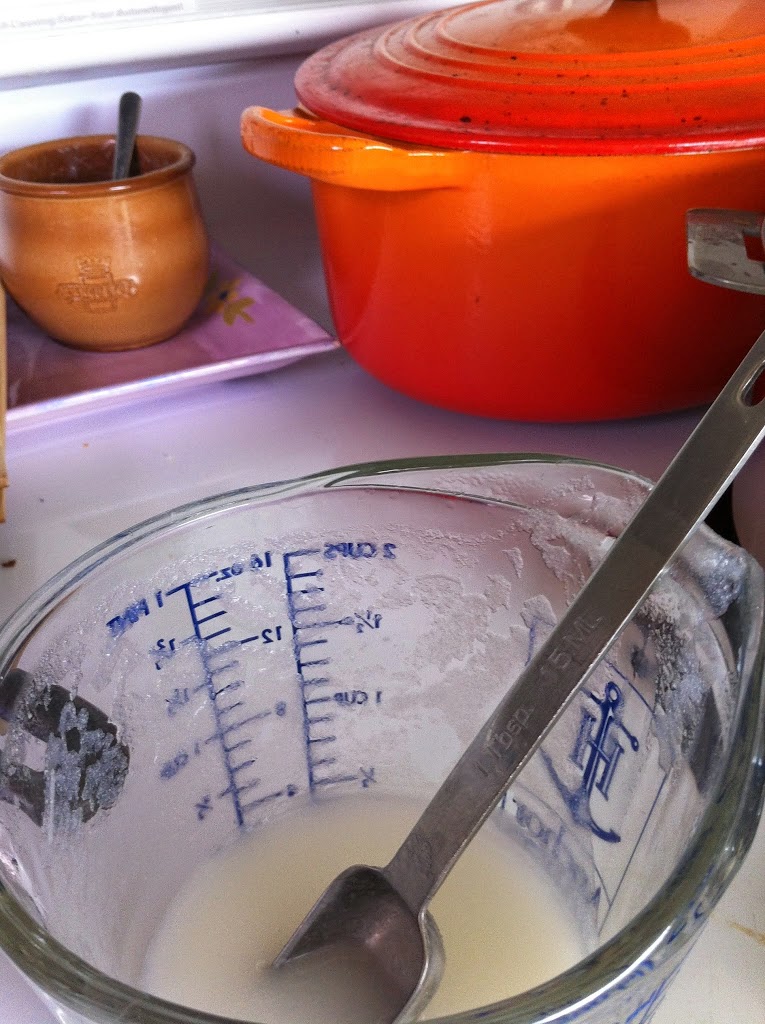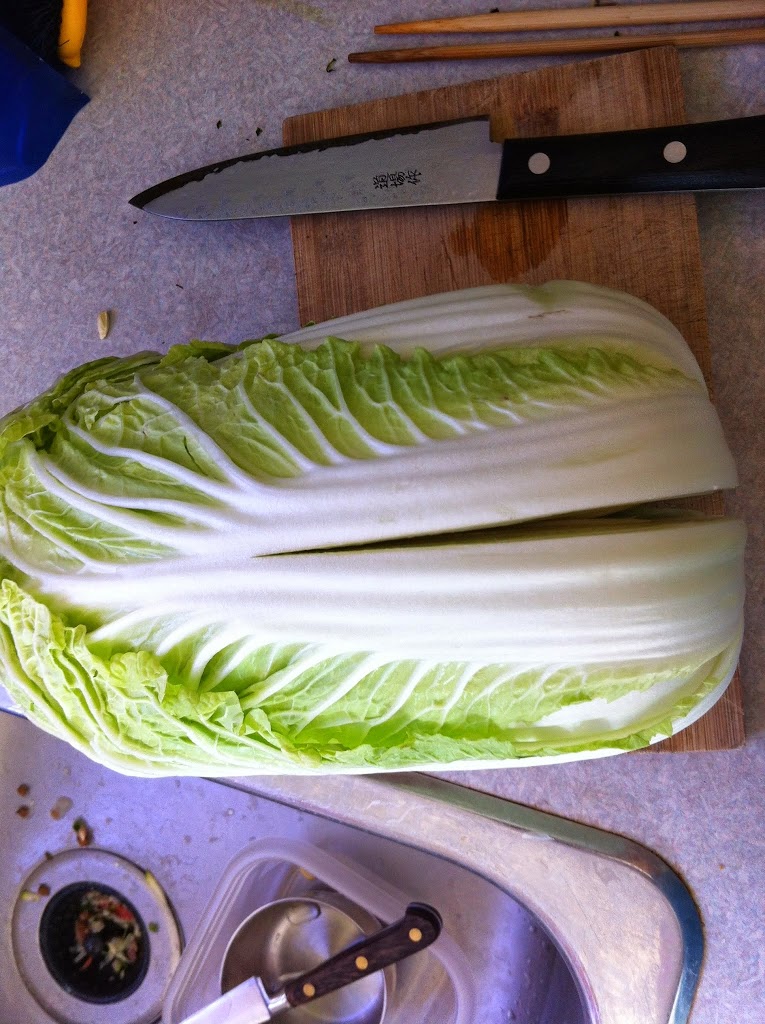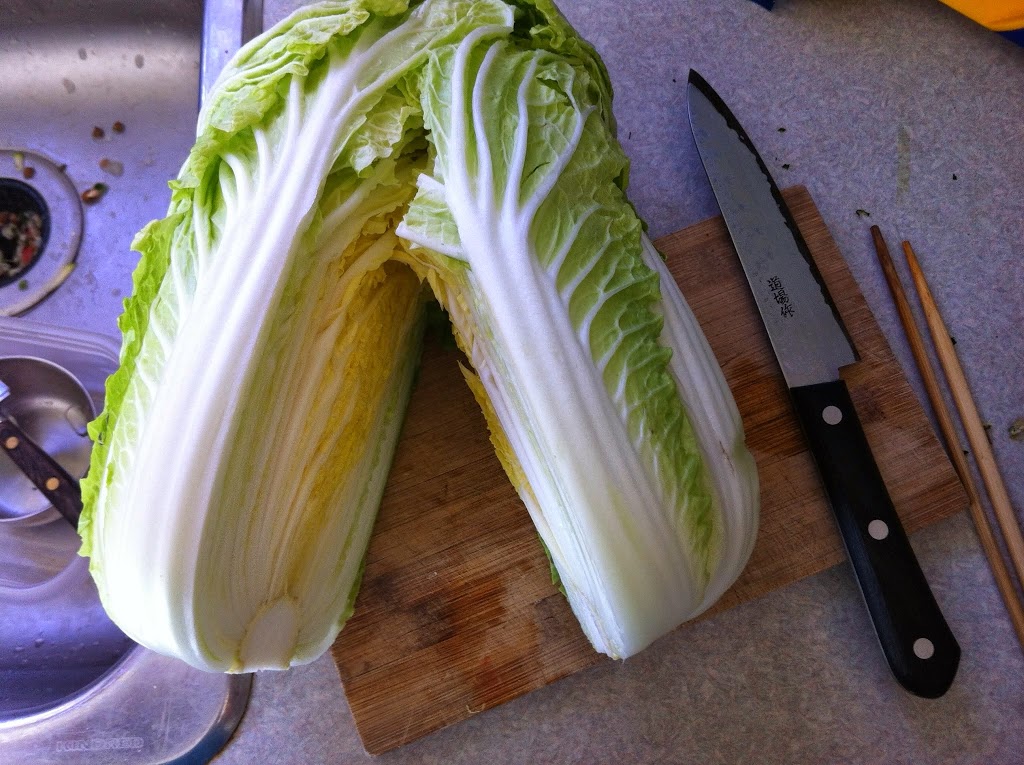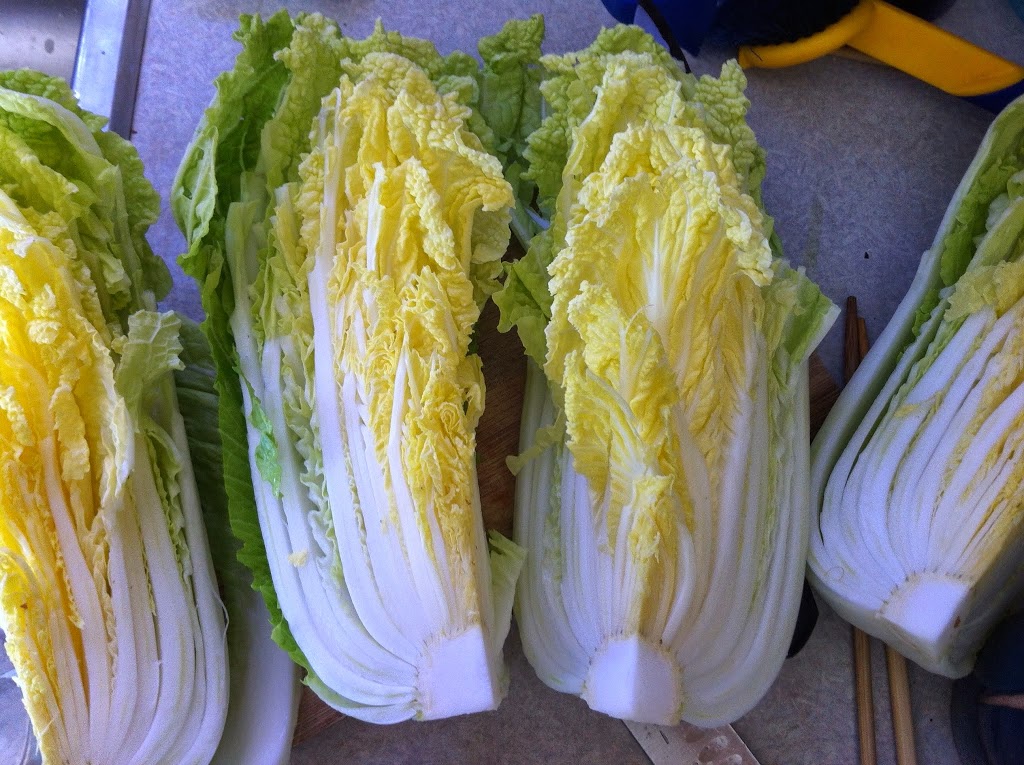Sometimes I think someone will knock on my door and take away my Korean card because my fridge has not contained kimchi for months. A daily meal time necessity for Koreans, the host of the Maangchi youtube channel and website has a recipe for “emergency kimchi” made with western style cabbage, not nappa cabbage and other easy to find ingredients. She resorted to making “emergency kimchi” while visiting Mexico because to some (real Korean people? I’m just a mere hyphenated Korean-Canadian), not having a supply of kimchi is an emergency!
My mom says she made a similar version of kimchi when she emigrated to Ottawa, Canada in 1968. No oriental vegetable section at the local grocery store at that time. As little as 15 years later, there came to be Korean farmers in Ontario and Korean grocery stores. My mom used to make huge batches of kimchi, starting with at least 1 huge box of cabbage and raddish. I even remember that at least one year we had some buried in the backyard in the garden (just like on MASH). But I think mostly, it was stored in the cellar or later the extra (kimchi) fridge. I learned some kimchi making tricks from my mom and grandmother. My grandmother passed away this past spring. She was well into her 90’s. One piece of advice I will remember from her is,
“To make good kimchi, you need to keep making kimchi.”
That was what I understood. She didn’t speak English and I only ever learned a small bit of Korean.
The cabbage was looking good, so I got myself 1 nappa cabbage. I only ever make 1 or 2 heads of cabbage into kimchi at a time. I think the first ever batch of kimchi I made, I made while I was living in France. I was pregnant. I had to travel by subway to the Korean grocery store in Paris which happens to be a few blocks from the Paris opera house (Palais Garnier). We were living in a very nice suburb, St. Germain-en-Laye at the time. I had cravings in the first month for McDonald’s hamburgers, which my husband would indulge me in maybe 3 times and then thank god it passed. They did not smell like anything and I was a bit queasy the first trimester. Then I had cravings for Korean food and Indian food most predominantly. The search for Indian spices took me to some unsavoury parts of the city. My first Korean cookbook was in French, written by a Korean woman who had lived in France for many years. I also took French cooking lessons from an American expat, Eve, living in the 15th arrondissement in Paris. I began my newly married life with time to throw myself into cooking in a country that values food and eating. I loved going to the market which was walking distance from our apartment. I still roll around the same wheeled blue shopping bag around the farmers’ markets in town and often get asked where I got it.
Tiny recipe for kimchi – based on the Easy kimchi recipe at Maangchi website (that recipe uses 10 pounds of cabbage – which is about 4-5 cabbages) . There are some excellent photos there and a video.
All amounts of ingredients are approximate and adjustable to taste.
1 nappa cabbage, quartered and cut into bite sized lengths + 1/4 cup pickling salt to wilt cabbage
1 cup water + 2.5 Tbs rice flour + 1 Tbs sugar cooked together to make a rice porridge
1/3 cup fish sauce, or substitute 2-4 Tbs sea salt or pickling salt + juice of 1 orange and orange zest
1/4 to 1/2 cup Korean hot red pepper flakes ( or my mom will use a combination of red bell pepper, tomato and chili pepper pureed in a blender )
7 cloves of garlic, minced or put through a garlic press
1 Tbs of finely minced ginger
1/3 cup minced white onion
3 green onions or a bunch of chives, cut on the diagonal into 1 inch lengths.
3 carrots, julienned
1 Korean radish, julienned – like a daikon radish but shorter and with some green colouring to the skin. I have used daikon radish as a substitute, or rutabaga or kohlrabi or turnip, or use more carrots. Beets would be interesting but I’ve never tried this.
One of my favourite tips for preparing the cabbage is to cut only half way into the cabbage and pull it apart the rest of the way. That way you avoid making tiny bits of cabbage. This technique also works with broccoli. I cut the stalks and pull apart the tops. It’s a small thing, but it makes me happy to pull apart the cabbage into quarters.
For thorough instructions with video go to the Maanchi easy kimchi recipe.
Here are the general instructions.
- Cut your cabbage into bite size pieces and soak them in water. Then salt the cabbage with about 1/4 cup of pickling salt. Toss it every 30 minutes to get it evenly salted for 90 minutes total. It will wilt and shrink during this time.
- Rinse and drain the cabbage.
- Make the rice flour and water porridge. Bring the water and rice flour to a boil and cook for about 5 minutes after it starts to make bubbles. Then add the sugar and stir again. Let cool.
- In a large bowl, mix the rice porridge, fish sauce or salt, red pepper flakes, pureed or finely minced mixture of garlic, ginger and onion, sliced green onion, carrots, radish or other veg. Mix well.
- Add the cabbage and mix everything together.
- Place into container(s). Leave out the whole thing or just a small container to ferment overnight.
- Eat right away or after fermenting. The flavour will change as it ferments. Keep the kimchi submerged under the liquid for best results.
You might be wondering what this could possibly have to do with sewing gym suits.
 |
| rice starch fabric stabilizer |
 |
| microwave 1 tablespoon of rice flour in 1/2 cup of water |
It can be used to stabilize knit fabrics for sewing and also glue together bits of fabric applique for easier sewing. You will use slightly less rice flour for making the fabric stabilizer. I used 1 Tablespoon of rice flour in 1/2 a cup of water. You could probably use even less. I cooked it in the microwave. Make sure you watch it and leave room for bubbling. As you can see from the sides of the measuring cup, it will expand in volume if allowed to boil.
 |
| Heather’s design of gymsuit, cut out by H and sewn by me |
I got this idea after reading this tutorial about sewing with knits suggesting a liquid paint on stabilizer be used for all seams. Not having ever come across such a thing and not feeling like going out to buy some, I googled and happened to find that Emily Smith Pearce had used boiled rice starch mixture to make a homemade version of fabric stabilizer. This idea came from a memory of her grandmother using the same technique! She just boiled a hand full of rice in a generous amount of water and used the milky starch mixture that was formed. Since I had rice flour around and had made kimchi recently, I used the rice flour. Same stuff in the end.
In what ways are you connected to your grandmothers? What memories do you have?






Be First to Comment